Dr. Barry Blesser Talks Voltair | Telos Alliance
By The Telos Alliance Team on Sep 23, 2015 6:20:00 PM
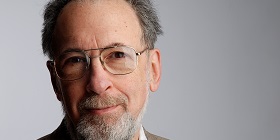
Dr. Barry Blesser Talks Voltair
ST: Thanks for taking the time to chat today, Dr. Blesser. Tell me a bit about your background. How did you get your start in audio and broadcast?
 MIT when I joined the MIT student radio station in 1961. I got really involved, then after a year or two, me and a couple others designed and built what may have been the country’s first transistorized mixing console. Transistors were just coming out and hadn’t quite made it into the commercial space of transistorized electronics yet.
MIT when I joined the MIT student radio station in 1961. I got really involved, then after a year or two, me and a couple others designed and built what may have been the country’s first transistorized mixing console. Transistors were just coming out and hadn’t quite made it into the commercial space of transistorized electronics yet.ST: Sounds like you were way ahead of the curve on that one—So who were some of your biggest influences and mentors as you were getting started in the field?
BB: Definitely some of the professors at MIT who had been graduate students during WWII. They were a completely different class of guys—dedicated, and conscientious—from an era where everyone just pitched in and contributed to the cause, doing everything they could for the country with no sort of arguing or pettiness. They really were a great bunch of guys.
ST: You mentioned building some one-of-a-kind hardware for the radio station at MIT—What other unique innovations did you come up with during that time?
BB: I developed a transistorized dynamic range compression box, again, one of the first, and sent that off to a German company (EMT) who decided to license it. Over the years, I kept feeding them random prototypes that they decided to manufacture until at one point about 80% of their product line consisted of my designs.
ST: Speaking of EMT, they were (and still are) legendary among recording engineers for their reverb units among many other things. I recall reading somewhere that you designed one of the very first digital reverbs for them.
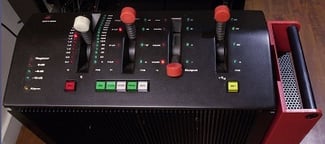 BB: In fact it was THE first commercial digital reverb system—the EMT 250. Universal Audio just did a plugin version…I did the reverse engineering for them. The original EMT 250 became somewhat of a classic. It had something like 32k words of memory, and 400 integrated circuits! The device was a large floor standing unit with controls mounted on top, and the entire outside of the case was one giant heat sink. There was so much heat inside the unit that was the only way to get it out! Along the way I also did the first AES digital conference in New York.
BB: In fact it was THE first commercial digital reverb system—the EMT 250. Universal Audio just did a plugin version…I did the reverse engineering for them. The original EMT 250 became somewhat of a classic. It had something like 32k words of memory, and 400 integrated circuits! The device was a large floor standing unit with controls mounted on top, and the entire outside of the case was one giant heat sink. There was so much heat inside the unit that was the only way to get it out! Along the way I also did the first AES digital conference in New York.ST: It’s amazing how many things have transitioned from hardware to software…as a side note, how does the plugin stand up against the original?
ST: Fast-forwarding a few years, how did you first connect with Geoff Steadman, Derek Pilkington, and ultimately form 25-Seven?
BB: It all started at a company called Ursa Major, which was part of AKG, where I met Geoff and Derek. They did a very primitive reverb system, and I ended up being a consultant to them. They decided to do a digital audio workstation, so I got involved in managing that project.
It all kind of started around this Digital Audio Workstatio
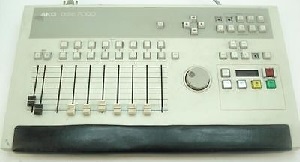 n project; the DSE7000 which ultimately became the Audicy. Once that stuff was all spun off from the parent companies, we never really had the market or the money to keep going with it because this was a $25,000 box—which ultimately would become a $29 plugin. We had a great time working together, the product was really successful, we did our own marketing and sales support, and we learned a lot about a lot of things. When that all kind of faded away due to various companies changing hands again, we were all out on our own and went our separate ways.
n project; the DSE7000 which ultimately became the Audicy. Once that stuff was all spun off from the parent companies, we never really had the market or the money to keep going with it because this was a $25,000 box—which ultimately would become a $29 plugin. We had a great time working together, the product was really successful, we did our own marketing and sales support, and we learned a lot about a lot of things. When that all kind of faded away due to various companies changing hands again, we were all out on our own and went our separate ways.Since we all enjoyed working together so much, Geoff kind of came up with the idea of starting 25-Seven and suggested we make time compression products. I was the designer of the time compression, so we started making boxes. It was a little garage operation. Money was tight—it was all because we wanted to work together. That continued for about 8 years. We could finance the sales and manufacturing, but we couldn't grow or pay people with what they deserved. It was a labor of love.
ST: Amazing how many great things start in somebody’s garage. How did all of that lead to your research into watermark technology?
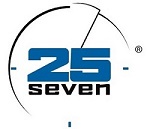 BB: The real excitement started in the early part of 2009. Geoff got a call from one of his buddies in Boston who is the Chief Engineer for a station group in that market. This engineer said, “We’ve got a talk show host who is extremely popular. Every time this host on the air, the phones absolutely light up. The show has an incredible following for the time slot, but for some reason during that same time period, our ratings tank. The programmers aren't sure if that is accurate.”
BB: The real excitement started in the early part of 2009. Geoff got a call from one of his buddies in Boston who is the Chief Engineer for a station group in that market. This engineer said, “We’ve got a talk show host who is extremely popular. Every time this host on the air, the phones absolutely light up. The show has an incredible following for the time slot, but for some reason during that same time period, our ratings tank. The programmers aren't sure if that is accurate.”Geoff gave me a call to chat about the problem. I said I didn’t even know anything about watermarking. Geoff was insistent—he said come on down to Boston, I’ll buy you lunch. So the three of us went to lunch, and this engineer described some of his experiences. I was intrigued—so I went off to study the problem and did some research.
Using only publicly available information, I wrote a whitepaper on the subject detailing my findings. At that time, nobody had really done any investigation or published anything on the subject, so we essentially became a clearinghouse of information for stations wondering about the impact of watermarking on their audio. That original whitepaper from 2009 is still posted on the Voltair page and available for download.
So this went on for a while, and we really did begin to understand the problem. Stations and others started to confirm our findings, although we couldn’t really prove anything beyond our own research. We got all of this positive feedback about being right on target, though nobody would speak publicly about it.
Later that year, I got a call from the House Oversight Committee investigating possible racial discrimination against Hispanic stations in ratings measurement. I was asked to serve as an unpaid consultant to help the lawyers understand the technical side of what was going on. It was the beginning of understanding that various audio material has a wide range of encodability when it comes to watermarking, from very good to non-existent.
ST: So people knew there was a potential problem, but nobody could quantify it. When did Voltair first come into the picture?
BB: We got involved with this and we really wanted to do something, but 25-Seven didn't have the resources. We didn’t have the capital or support, and really didn’t have the ability to stand in this space. We had been a Livewire® partner for years, and one day got a call from Telos and were invited to come see them. It turned out that Frank had done some similar technical analysis and the subject fascinated him. We ended up doing a lot of discussion and negotiation—ultimately 25-Seven joined The Telos Alliance, giving us the resources to really dig into this, and start the development of Voltair.

ST: Earlier you mentioned the wide range of encodability for programming. What encodes well and what doesn’t?
BB: Well, in general any sort of continuous audio program material encodes just fine. Organ, for example, does well. Anything with a lot of constant energy, a broad spectrum, particularly in the 1-3 kHz range that just kind of sits there statically without moving around encodes well.
On the other extreme, programming containing staccato music and voice does not encode well. With some voices, the encoding becomes almost non-existent. The voice phonemes only last for about 20-30 milliseconds whereas the watermarking symbols are more like 400 milliseconds, so the watermarking tones don’t get turned on long enough. Anything with little energy above 1 kHz won’t encode well either.
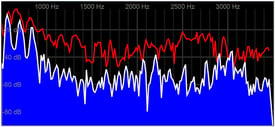
BB: Well, a lot of the intellectual property behind the technology is still secret, but physics is physics. I was able to look at the signals, build a mental model, and we built into Voltair an emulation of what the measurement devices are seeing. There are a lot of possible implementations, but you can’t design something that doesn’t correspond to science and physics.
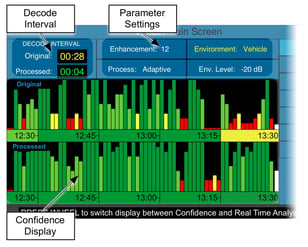 I looked at it and built into Voltair the equivalent of a measurement tool to mimic what’s going on. I can’t mimic the acoustic environment except for one listener at a time, because we know that if you’re listening in a sports bar, or a kitchen, or if the baby is crying you’re going to get different results. I can’t generate the statistics of ALL of the possible listeners out there, but stations can pick one representative listener environment and do an analysis on that—so if you’re doing a sports event, you might pick a sports bar for the typical environment.
I looked at it and built into Voltair the equivalent of a measurement tool to mimic what’s going on. I can’t mimic the acoustic environment except for one listener at a time, because we know that if you’re listening in a sports bar, or a kitchen, or if the baby is crying you’re going to get different results. I can’t generate the statistics of ALL of the possible listeners out there, but stations can pick one representative listener environment and do an analysis on that—so if you’re doing a sports event, you might pick a sports bar for the typical environment.It’s not a precision instrument but you really don’t need it to be—It’s really software, sorting things into very good, good, not so good, mediocre, poor, disastrous. If you get it slightly wrong, it’s not a big deal… you’re just trying to get a sort. Until Voltair came along, all stations had was a confidence monitor that gave them a pass/fail grade.
ST: 25-Seven just released Voltair 2.0. What are some of the new features that stations might be excited about?
BB: We’ve extended what we call the “back door” to Voltair—The front panel gives quite a bit of information,but there is also a massive database inside Voltair of the information it has recorded since installation.
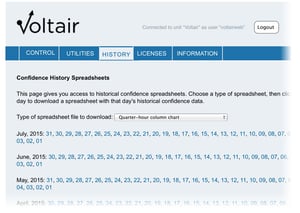 Many large groups have an analytics department keeping tabs on programming and listenership, and now data from Voltair can be incorporated into those analysis systems at the enterprise level. Stations can also download detailed spreadsheets of this data from Voltair to show them how their program material is encoding. They can run their own experiments using Voltair as an analytics engine.
Many large groups have an analytics department keeping tabs on programming and listenership, and now data from Voltair can be incorporated into those analysis systems at the enterprise level. Stations can also download detailed spreadsheets of this data from Voltair to show them how their program material is encoding. They can run their own experiments using Voltair as an analytics engine.More advertisers are moving to these sorts of programmatic data driven initiatives. We’re now giving people the “back door” to this sort of data from their Voltair units, which they can then plug into their other analytics packages.
ST: Where do you see the industry heading as a whole and what’s the impact of Voltair on that?
BB: Let me answer the second part of that question first—Up until Voltair, stations just had to trust that everything was working at perfect optimization. The old saying “trust but verify” applies here. Voltair really opened up the “black box” by giving stations visibility and the freedom to run their own experiments, changing enhancement levels, and measuring how well their program material encodes.
The big impact is that we’ve put on the table all of those questions that have been swept under the rug for the last 9 years or so. Suddenly people are recognizing that this is a real system with real properties, real strengths and tradeoffs. It's all about managing those tradeoffs.
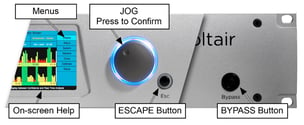 Voltair has taken away the argument that the technology is perfect. Stations can take responsibility for managing and understanding their own part of the system—and it is a system—It’s not owned by any one stakeholder. There’s the watermarking technology, there’s the radio station’s programming, there’s the listener environment and sensitivity to artifacts, the advertisers…It’s basically 4 or 5 stakeholders, all of which are part of this system one way or another. It’s not a private system that any one stakeholder can “own”—It’s too complicated and interdependent.
Voltair has taken away the argument that the technology is perfect. Stations can take responsibility for managing and understanding their own part of the system—and it is a system—It’s not owned by any one stakeholder. There’s the watermarking technology, there’s the radio station’s programming, there’s the listener environment and sensitivity to artifacts, the advertisers…It’s basically 4 or 5 stakeholders, all of which are part of this system one way or another. It’s not a private system that any one stakeholder can “own”—It’s too complicated and interdependent.We’ve really enfranchised stations to have an opinion and to act on that opinion. Up until Voltair they could have an opinion but they had no analysis tools to quantify it. Voltair gives them the ability to have an opinion AND act on it, in terms of enhancement, in terms of program selection, AND in terms of analyzing the results in real time. The real change (and I’m delighted) is that people feel it’s part of their business—it isn’t just a “black box.”
ST: So where do you want this to go in the long run?
BB: The creation of Voltair really only addresses about 1/3 of the whole chain. With the direction we’re heading in terms of integration with Omnia®, it will address the second part of that equation. The third part would require modifying the watermarking technology itself. My fantasy would be creating a watermarking system that is reliable for ALL classes of material AND does it without creating audible artifacts. I believe I could do that if I ever had the vehicle for doing it.
ST: What is it that really drives you in doing all of this?
BB: I started my career in radio, I’m still going in it, I love it, I’m 72, and I want to leave behind something that has value to the world, and I’m really lucky enough to have an opportunity where I can make a difference.
ST: If you could give the industry one takeaway from all of this, what would be?
BB: Get invested in understanding and managing something that affects your own destiny—and don’t take “it’s none of your business” for an answer.
ST: This is exciting stuff. Thanks again for taking the time to chat, Dr. Blesser.
Telos Alliance has led the audio industry’s innovation in Broadcast Audio, Digital Mixing & Mastering, Audio Processors & Compression, Broadcast Mixing Consoles, Audio Interfaces, AoIP & VoIP for over three decades. The Telos Alliance family of products include Telos® Systems, Omnia® Audio, Axia® Audio, Linear Acoustic®, 25-Seven® Systems, Minnetonka™ Audio and Jünger Audio. Covering all ranges of Audio Applications for Radio & Television from Telos Infinity IP Intercom Systems, Jünger Audio AIXpressor Audio Processor, Omnia 11 Radio Processors, Axia Networked Quasar Broadcast Mixing Consoles and Linear Acoustic AMS Audio Quality Loudness Monitoring and 25-Seven TVC-15 Watermark Analyzer & Monitor. Telos Alliance offers audio solutions for any and every Radio, Television, Live Events, Podcast & Live Streaming Studio With Telos Alliance “Broadcast Without Limits.”
Recent Posts
Subscribe
If you love broadcast audio, you'll love Telos Alliance's newsletter. Get it delivered to your inbox by subscribing below!